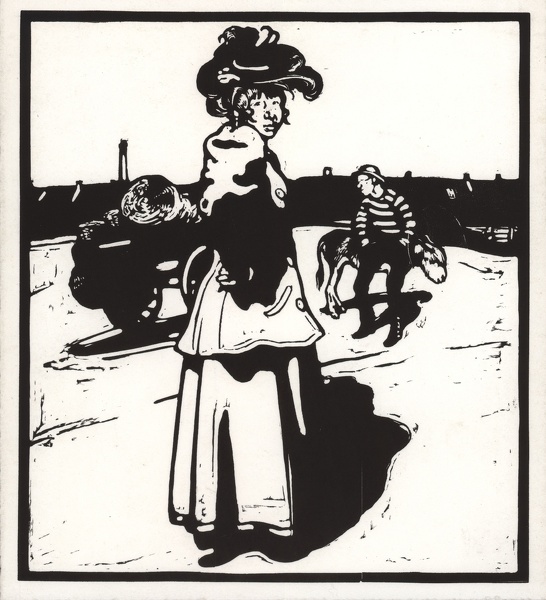
 SOLD
SOLD
William Nicholson:
M is for Milkmaid
Framed (ref: 7755)
Wood Engraving, without colour, posthumously printed from the original block10 1/2 x 9 1/2 in. (26.7 x 24 cm)
Tags: William Nicholson engraving print
Provenance: The Artist's Estate; Private collection
Only 40 impressions of this image were originally produced when the the deluxe edition of 'An Alphabet' was printed in 1897.
The Keeper is a portrait of George Carpenter, MD, who was a patron of Nicholson’s and godfather to the artist’s son Christopher.
Lietrature, William Nicholson, Colin Campbell, Barrie and Jenkins 1992, (ref 25A).
After being very impressed by the young artist’s work, Whistler arranged an interview for Nicholson with the publisher William Heinemann. Marguerite Steen describes this first meeting in her book:
‘Heinemann received him cordially; it was not every day he received young artists bearing such credentials as an introduction from James McNeil Whistler. He wanted, he said, ideas; and William, who, on this occasion at least, showed some of the paternal shrewdness, suggested an Alphabet, at a fiver a letter. Having commissioned A, it was bound to go on to Z, which would secure the rent for twenty-eight weeks at any rate!’
Nicholson produced two sample cuts, A was an Artist and D is for Dandy, which Heinemann approved, then, on the 27th of November 1896, Nicholson signed an agreement with Heinemann to produce ‘a set of twenty-six woodcuts representing the Alphabet’.
Nicholson worked on his designs tirelessly over the next few months in his small house in Avonmore Gardens. An Alphabet was well received by critics and public alike when it was published in October 1897.
Heinemann wrote in the prospectus for An Alphabet:
‘The simplicity of his method will appeal especially to the artist, but the picturesquement of treatment must be appreciated by all, while the wholesomeness and truth to nature of these designs will ensure for them a welcome in every English home. The parent will pleasantly conjure up reminiscences of quaint customs of the past, and the child will be fascinated alike by the bizarre attraction of colour and by the impressive types selected.’
We are grateful to Hilary Gerrish for assistance







